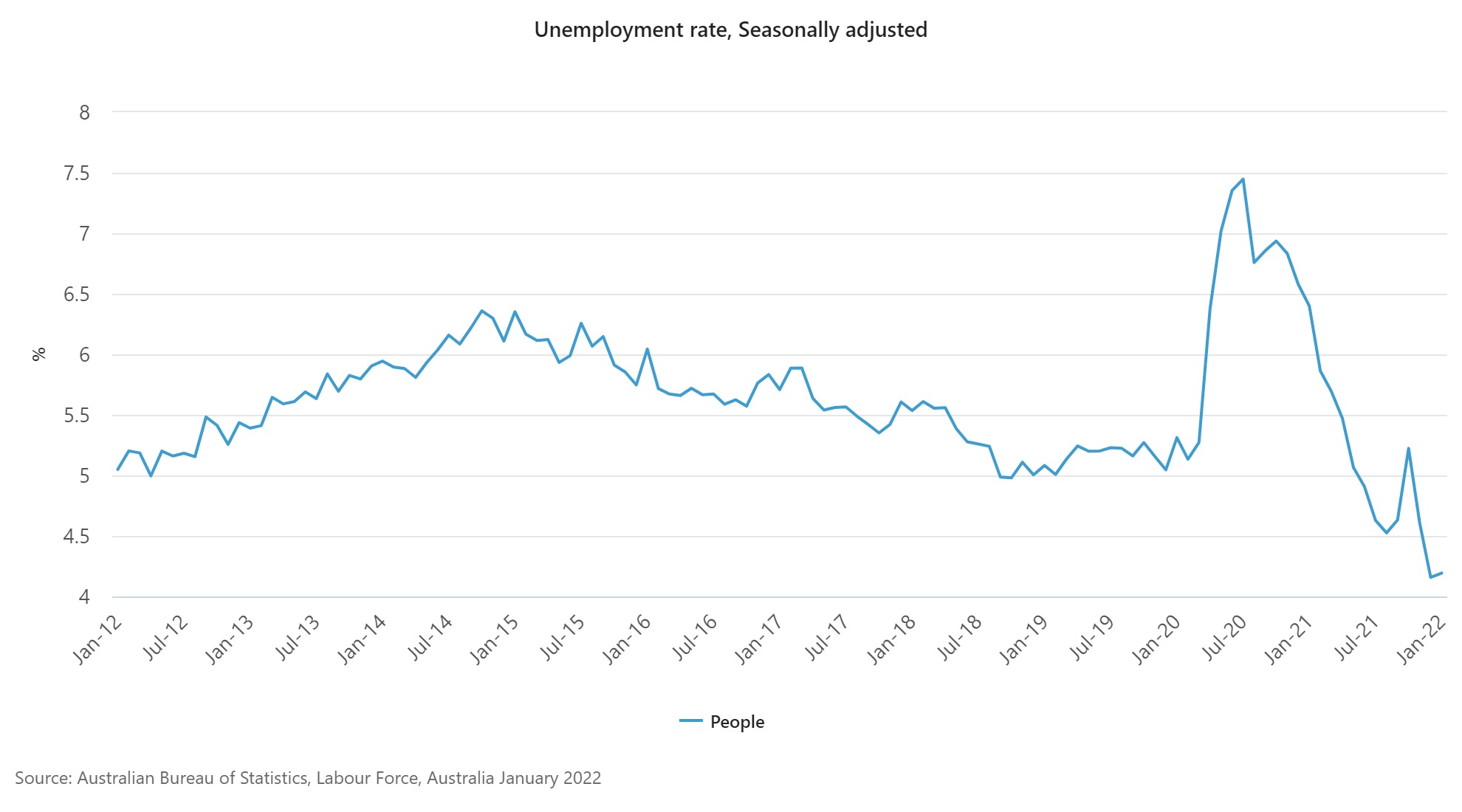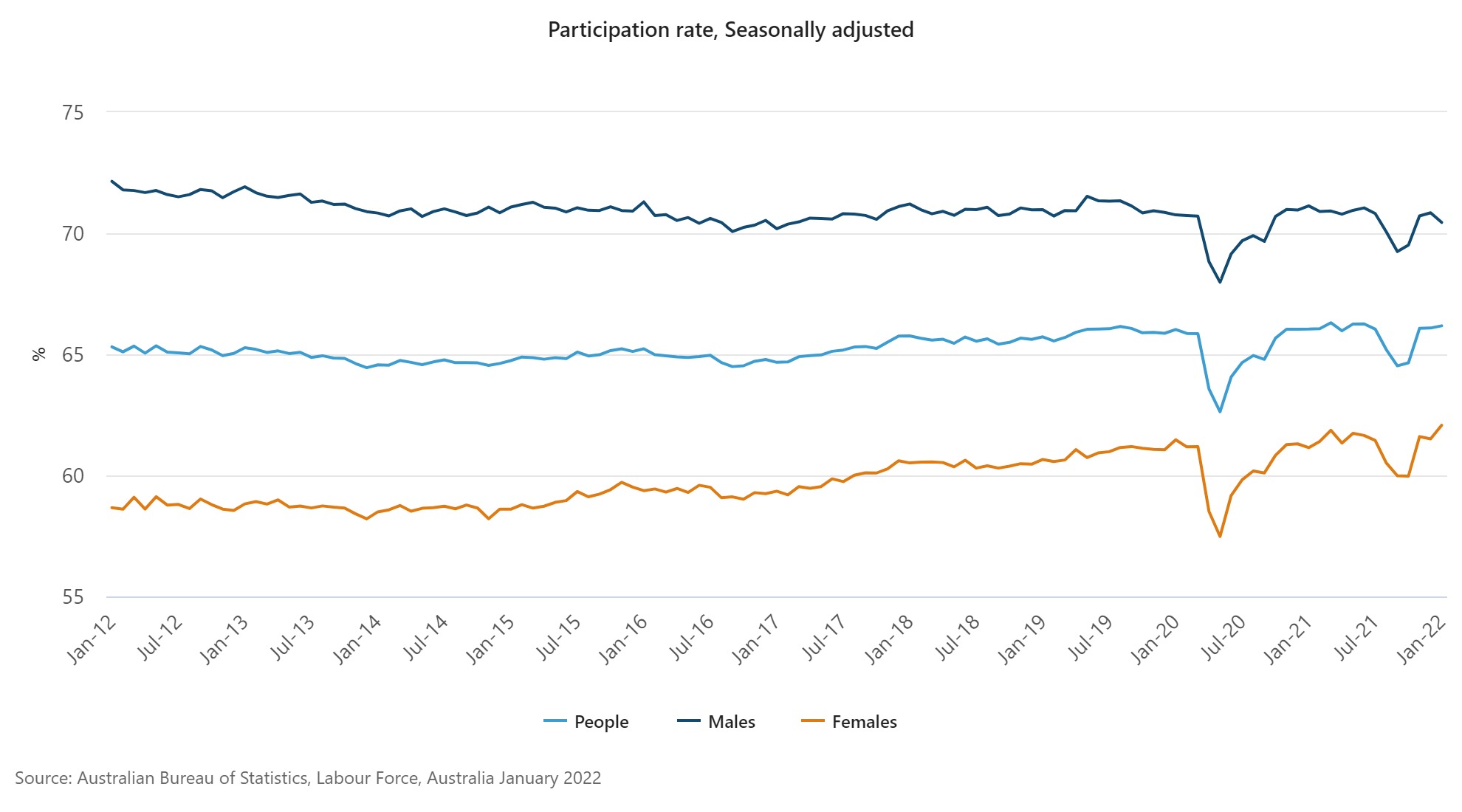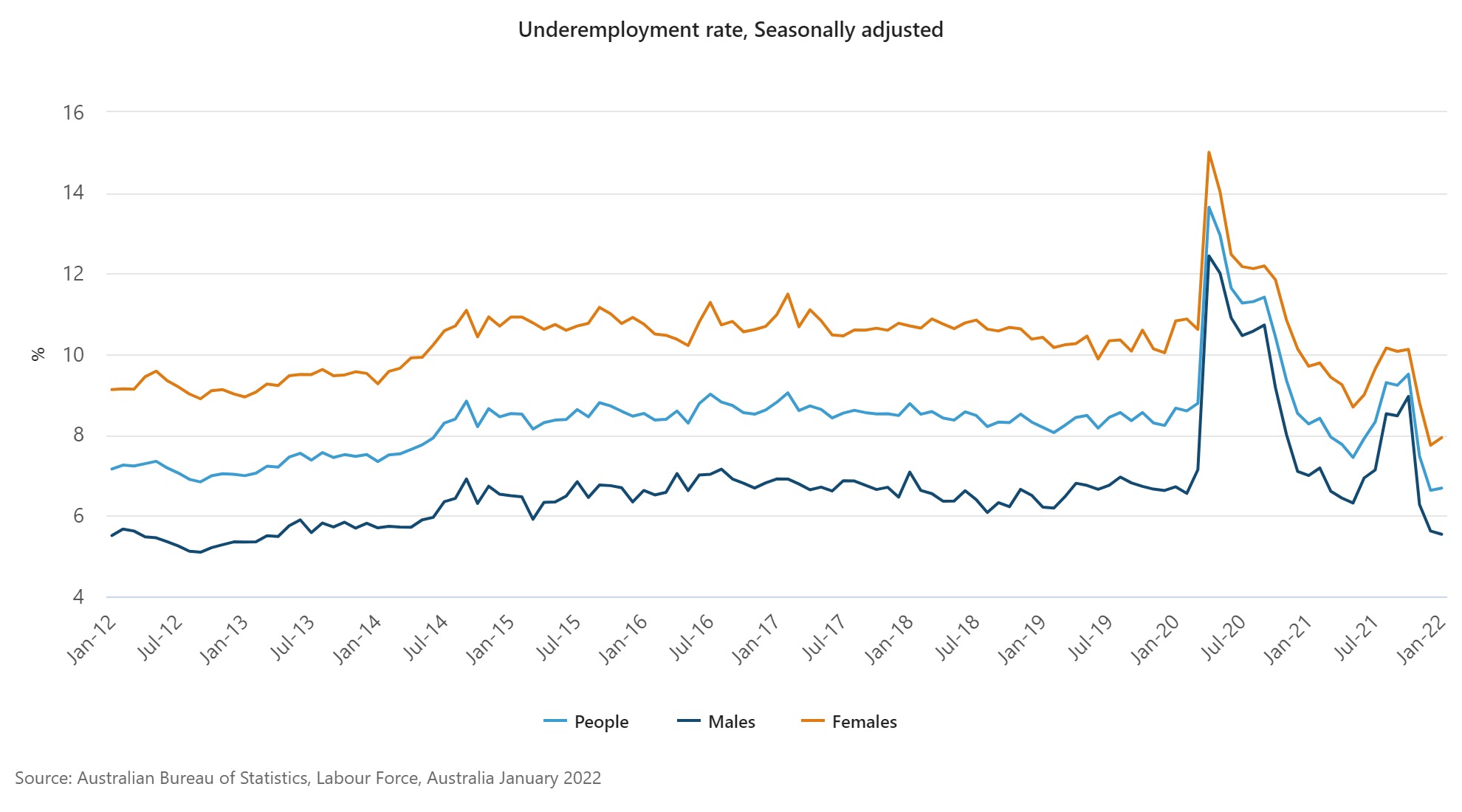Australian Candidate Market in 2022
Here we explore the Australian candidate market in 2022 – how it’s different from last year and why, and what you need to do if you want to attract the best staff. The path out of COVID is well and truly here. But things are different. What does this mean for you as a Hiring Manager in 2022?
Bernadette Eichner

Last year, just as Sydney went into an extended lockdown, I wrote about how the candidate market had changed in Australia and what you needed to do if you were looking for staff.
Here we are on the other side of COVID (we hope), the economy is booming and the Australian Bureau of Statistics (ABS) has released the seasonally adjusted figures for January 2022, so I thought we’d have a look at how the candidate market is shaping up for 2022 and beyond and share what you need to know.
Australian job vacancies at an all-time high and candidate numbers at an all-time low
If you did a bit of economics at school and learned about the law of supply and demand, you’ll know this isn’t an ideal situation for employers.
The number of available jobs in Australia is at an all time high. According to the ABS, the number of job vacancies in Australia in November 2021 was 74.2% higher than in February 2020, before the pandemic.
The largest job boards in Australia confirm the trend – job postings on Indeed’s Australia site were 97% higher at the end of December 2021 than the pre-pandemic baseline of February 1 2020 and Seek.com.au reported a 33% increase in the period January 2019 – January 2022.January saw the most job ads on seek.com.au in the company’s 25-year history.
This is partly because companies in New South Wales and Victoria have been staffing up big time since the widespread lockdowns were eased and then lifted in October 2021 but also because those jobs normally snapped up by backpackers and migrants now need to be filled by local staff.
In short, there are more jobs than people to fill them. Here’s why:
-
International border closures have slowed population growth to 0.1% – fewer than 36,000 people were able to enter the country during the pandemic. And this was most devastating in the 15-34 age group which experienced a net loss of almost 350,000 people!
-
Unemployment is at a low of 4.2%, threatening to eclipse the all-time record of 4% at the end of February 2008, just before the Global Financial Crisis.

- The participation rate has increased to 66.2% – that is, two-thirds of those aged 15 -65 years are working

Interestingly though, the underemployment rate increased to 6.7% and monthly hours worked decreased by 159 million hours, so while there are more people employed, it is casual and part-time jobs that are on the rise – full-time employment decreased by 17,000 to 9,077,300 people, and part-time employment increased by 30,000 to 4,177,600 people.

What do we know about predicted candidate behaviour in 2022?
In my recent blog 5 Things you Need to Know if you Want to Attract Great Staff, I talked about what candidates are looking for – flexibility, market-rate salaries, inspiring managers and ethical company cultures, opportunities to learn and develop, and job security.
In the period 9th September – 1st October 2021, 1,806 working adults participated in a survey for the report The Future of Work, What Workers Want, commissioned by PwC Australia. The research sought to understand what we could expect in the candidate market in 2022 and what employers need to be doing to not come out the losers.
The report found that 38% of workers planned to leave their current job in the next 12 months and what they would be looking for in their next job was appropriate remuneration, pleasant workspaces with perks that demonstrated they were valued, flexible working arrangements that maximised the use of technology, companies that invested in their physical and mental wellbeing, and learning and career development opportunities.
The Employee Value Proposition (EVP) is the #1 concern of candidates looking to maximise their opportunities in the current market.
What is an EVP and why does it matter in 2022?
An employee value proposition (EVP) is the unique set of benefits that an employee receives in return for the skills, capabilities, and experience they bring to a company. An EVP is about defining the essence of your company – how it is unique and what it stands for. That is, why would a high performer want to work with you over one of your competitors?
Sadly, it seems this isn’t something that Australian companies spend much time on. In their haste to get staff on board, they can’t articulate why someone should work for them and this will become their biggest barrier to getting the talent they want in 2022.
In the PwC report, 48% of Australian business leaders surveyed stated that they had no plans to review or redesign their EVP.
What does all this mean for you as a Hiring Manager?
Put simply, you’re not driving the talent market any more. The talent is. It’s a completely different ball-game and the strategies of the past just won’t work.
Here’s what you need to know if you want to be ahead of the pack in 2022.
We’re in a candidate-driven market
Remember the law of supply and demand – when demand is high, the suppliers have all the power. In the employment market, that’s the candidates you’re trying to attract. Gone are the days when you were offering people a job and they should be grateful for that. You need to actively attract them!
Make sure your EVP is a good one
If you can’t articulate why someone would want to work for you, then you’ll lose in 2022. Instead of looking for the people you want in numerous haystacks, start thinking about how you can attract the people you want so they come to you – it’s a subtle but important difference in approach. What do you offer? Is it aligned with what candidates are clearly saying they want? How can you differentiate yourself in the candidate market in the same way you do with your business offering?
Candidates are pickier
With so much on offer, candidates can afford to wait and pick and choose the opportunities they’re interested in. And they know they have the power to leverage their skills and experience against the list of things they expect in return. That means you need to make sure your EVP is attractive and is delivered once they start – accept what they are looking for and offer it.
The recruitment process needs to be flexible
With the technology available today, you no longer need to do everything face to face. In the early phases of a recruitment project, don’t be afraid to conduct your screening and first round interviews remotely. Candidates now expect this approach. Not to mention such an approach will speed up your recruitment process considerably – important when you are competing in such a small talent pool.
Don’t rely on an ad on the Job Boards – it’s all about ‘passive’ candidates
High employment rates mean that the candidate you want is most likely already employed somewhere else and probably not even looking around for another job. We call these ‘passive’ candidates – candidates who aren’t actively looking to move but would if the right opportunity was presented to them.
Passive candidates make great hires because they’ve made an active decision to join your company rather than just ‘taking the job’.
Learning how to reach passive candidates is your greatest weapon in a tight candidate market.
Get networking
The best way to get what you want is to ask for it. Put it out there. You don’t know who people know. Ask your industry colleagues over a beer whether they know of anyone who could do the job you want done. Spread it around your family and friends. Put it out on social media. Get your staff on board too – after all, they are your best advocates
Consider using a professional recruiter
In a tight candidate market, you need all the help you can get. Professional recruiters find people quickly for a living. They have significant databases, access to high-end technology for search purposes, know how to write ads that attract the type of person you’re looking for, and know how to use groups on social media effectively to attract candidates.
The cost benefits are enormous – weigh them up against your time spent doing something you’re not professionally trained to do, the cost of not having someone in the role, and the cost of not being able to effectively match the level of activity your competitors have in the market. Here’s 5 reasons why you should think about it!
Intelligence is the ability to adapt to change
Intelligence is the ability to adapt to change. Stephen Hawking
Success has always been the domain of those who best adapt to change. We spend lots of time and money mapping market trends when it comes to our products and our customers so we can quickly adapt to sustain growth.
It makes sense that we would also apply this level of interest and energy to understanding the labour market.
Knowing what candidates will be attracted to is the first step.
Professional recruitment and fair pricing? Yes, it‘s possible!
At Just Right People Recruitment we‘ll give you the flexibility to choose between three different pricing models. And we guarantee each one will deliver a high-quality recruitment outcome tailored to your job, your budget and your specific needs. Now, that’s fair!
Learn more…Bernadette Eichner
Bernadette Eichner, Cofounder and CEO of Just Right People, is a recruitment industry entrepreneur and thought leader in Australia, totally committed to improving the recruiter experience for clients and candidates alike. Her secret to life is to “just do the next thing that needs to be done”.
Follow Bernadette

